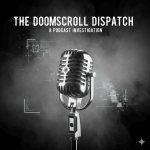The FBI Sting That Caught McDonald’s Inside Man

The FBI Sting That Caught McDonald’s Inside Man

Introduction: The Unwinnable Game
For millions, it was a cherished ritual. You would peel the game piece, hold your breath, and dream of winning a million dollars. But what if the dream was a lie from the start?
The question of who famously won the McDonald’s Monopoly game is a natural one. The promotion embedded itself in the public consciousness with tantalizing promises of instant wealth and life-changing jackpots.¹ However, a search for legitimate high-value winners from the game’s golden era (1989-2001) is an exercise in futility. The inquiry is built on a false premise.
This report’s central thesis is that for over a decade, an insider systematically rigged the game, making it unwinnable for the public.², ³, ⁴
This investigation will uncover the exhaustive true story of that fraud. It details the mastermind, the criminal network he built, and the ingenious FBI sting that brought it all down. It also explains the historical accident that buried one of modern America’s most audacious fraud schemes for nearly two decades.⁵, ⁶
From 1989 to 2001, a trusted insider named Jerome “Uncle Jerry” Jacobson stole and distributed nearly every high-value winning game piece. He siphoned an estimated $24 million in cash and prizes through his network.¹, ⁷, ⁸ The public, faithfully collecting Boardwalk and Park Place, never stood a chance.¹, ⁹ The story of this massive fraud begins with the one man who held all the keys.
(more…)In late April 2025, an elderly investor in the United States became the victim of a devastating social engineering attack. The prize for the hackers: 3,520 Bitcoin, worth over $330 million. What happened next was a masterclass in modern money laundering. The stolen funds were rapidly funneled through at least six different exchanges and swapped for Monero (XMR), a cryptocurrency famous for its promise of privacy. The massive purchases caused Monero’s price to surge by a verifiable 8.2% in just two hours, triggering such extreme volatility that some illiquid markets saw temporary intraday spikes as high as 50%.
This single, dramatic event is more than just another crypto-theft headline. It’s a key that unlocks the door to the crypto ecosystem’s most surprising and misunderstood secrets. It peels back the curtain on the popular narratives and reveals a far more complex—and often contradictory—reality. What follows are five critical truths, drawn from academic research, leaked data, and strategic analysis, that challenge everything you think you know about digital currency.
1. The World’s Most “Untraceable” Coin is Shockingly Easy to Trace
For criminals and privacy purists alike, Monero (XMR) is the holy grail: a digital currency advertised as completely untraceable. It is the preferred medium of exchange on darknet markets and the ransom currency for sophisticated cybercriminal gangs. Its core promise and entire reason for being is “untraceability.”
But a groundbreaking academic paper, “A Traceability Analysis of Monero’s Blockchain,” revealed a shockingly different reality. In a real-world analysis of Monero’s public ledger, researchers uncovered devastating flaws in its privacy protections.
• The Zero Mix-in Flaw: Monero’s privacy relies on “mix-ins,” which are decoy transactions used to hide the real sender. The analysis found that a staggering 65.9% of all Monero inputs used zero mix-ins. Without any decoys, these transactions were trivially traceable.
• The Cascade Effect: Each of these easily traced transactions created a domino effect. As researchers identified the real sender in one transaction, they could use that information to eliminate it as a decoy in other transactions. This “cascade effect” allowed them to de-anonymize other, seemingly protected transactions.
The final conclusion was stunning: a passive adversary—meaning someone with access only to the public blockchain data and no special hacking tools—could trace a conclusive 88% of all Monero inputs. This massive gap between theory and practice hasn’t gone unnoticed by authorities. The U.S. Internal Revenue Service (IRS) has awarded contracts to blockchain analysis firms like Chainalysis specifically to develop Monero-tracing tools, proving that the world’s most “private” coin is anything but.
But if the privacy is an illusion, what about the price itself? The data reveals an even more fragile foundation.

The panic over the Claude AI being used for cybercrime is misplaced. The AI isn’t the problem. The real threat is our ancient and fundamentally insecure communication platforms, with email being the worst offender.
Email lacks the basic security verification, like the padlock on websites, that we should expect for critical communications. It was never built to be safe, which is why criminals find it so easy to fake identities and send fraudulent messages. The AI is simply a new tool that helps them exploit this old weakness more efficiently.
This isn’t just about email. Even supposedly secure apps like Signal have shown major design flaws, proving we can’t just trust brand names or marketing.
The mission is clear. America needs to stop patching these broken systems and lead the way in building secure replacements. These new systems must have real verification built in from the start.
https://www.anthropic.com/news/detecting-countering-misuse-aug-2025
The Black Hole of Healthcare Spending
There are staggering statistics about the current US national debt and the percentage attributed to healthcare programs like Medicare and Medicaid.
There are well-documented problems of fraud, waste, and abuse: upcoding, phantom billing, medically unnecessary procedures …
Traditional human-led audits are slow, expensive, and only catch a tiny fraction of the problem, creating a massive accountability gap.
Enter the AI Auditor, A New Paradigm for Transparency
Using advanced AI and machine learning models to analyze massive healthcare claims datasets in real-time.
AI can identify complex patterns of fraud that are invisible to human auditors: collusive networks of providers, subtle anomalies across millions of claims …
The current model is “pay and chase” … what about a future of “pre-payment verification” where AI flags suspicious claims before a single taxpayer dollar is spent?
(more…)
The risks extend beyond simple technical errors and encompass systemic vulnerabilities that could undermine the entire oversight framework.
(more…)
The analogy comparing the national debt to the COVID-19 “flatten the curve” mantra is a profoundly misleading and dangerous simplification of the crisis we face. The comparison is particularly flawed when one recalls the data inconsistencies during the initial wave of COVID-19. In early 2020, many observers noted with suspicion that official data from sources like Johns Hopkins University showed a startlingly low number of recoveries in the United States. This data “weirdness,” born from the chaos of tracking a novel virus in real-time, highlights a key difference: the COVID-19 curve was a matter of incomplete, real-time data, while the national debt curve is a matter of precise, cumulative accounting.
The national debt isn’t a virus that will simply “burn out” or be defeated by a short-term, emergency response. It is a chronic, metastasizing cancer on the body politic, the result of decades of policy decisions. Proposals for a “debt ceiling app” or other simple fixes are shortsighted political theater. Congress has repeatedly demonstrated its willingness to raise the debt ceiling, rendering it more of a talking point than a genuine constraint.
The real technological revolution that offers a path forward is not in financial gimmicks, but in artificial intelligence, LLMs, and robotics. Their promise is not magical “growth,” but something far more valuable: the ruthless elimination of waste, fraud, and abuse. The potential for automation to overhaul the medical and insurance industries—the true drivers of our debt—is immense. Imagine humanoid robots, like Tesla’s Optimus, providing comprehensive elder care. These machines could handle everything from showering a grandparent to monitoring their vitals, ending the soul-crushing and financially ruinous nursing home industry. This isn’t science fiction; it is a necessary step to slash the costs that are bankrupting our nation.
(more…)